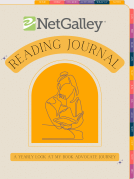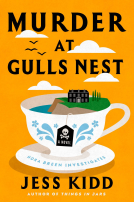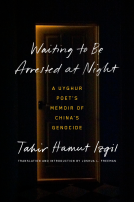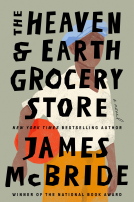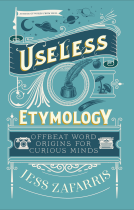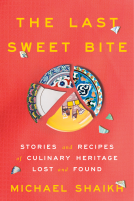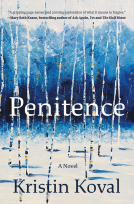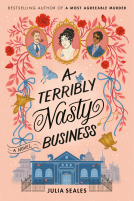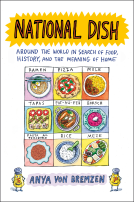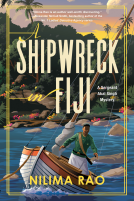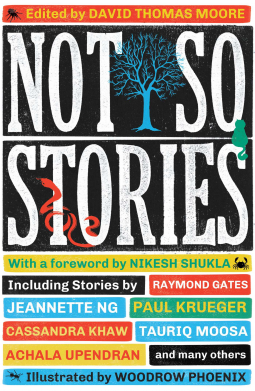
Not So Stories
by Adiwijaya Iskandar; Joseph Elliott-Coleman; Raymond Gates; Zina Hutton; Georgina Kamsika; Cassandra Khaw; Paul Krueger; Stewart Hotston; Tauriq Moosa
This title was previously available on NetGalley and is now archived.
Send NetGalley books directly to your Kindle or Kindle app
1
To read on a Kindle or Kindle app, please add kindle@netgalley.com as an approved email address to receive files in your Amazon account. Click here for step-by-step instructions.
2
Also find your Kindle email address within your Amazon account, and enter it here.
Pub Date Jan 21 2020 | Archive Date Jan 17 2020
Rebellion | Abaddon
Talking about this book? Use #NotSoStories #NetGalley. More hashtag tips!
Description
Once upon a time, Rudyard Kipling’s Just So Stories—fantastical yarns of wondrous creatures in faraway places—bewitched children across the world. But times change. Today, Kipling’s writing tells us a different tale; of a love of Empire, and the troubling legacy of British colonialism.
In Not So Stories, writers of colour from around the world reclaim these stories and remake them into something new. Something different. Something that belongs to us all.
Including stories by Adiwijaya Iskandar, Joseph Elliott-Coleman, Raymond Gates, Stewart Hotston, Zina Hutton, Georgina Kamsika, Cassandra Khaw, Paul Krueger, Tauriq Moosa, Jeannette Ng, Ali Nouraei, Wayne Santos, Zedeck Siew and Achala Upendran, with illustrations by Woodrow Phoenix and a foreword by Nikesh Shukla.
Advance Praise
"It's a brave choice to take something so much a part of the canon as Kipling and make it more inclusive, and yet that's what has happened in the following pages."
- Nikesh Shukla
"It's a brave choice to take something so much a part of the canon as Kipling and make it more inclusive, and yet that's what has happened in the following pages."
- Nikesh Shukla
Marketing Plan
For all marketing and PR opportunities, please contact Rob Power (rob.power@rebellion.co.uk)
For all marketing and PR opportunities, please contact Rob Power (rob.power@rebellion.co.uk)
Available Editions
| EDITION | Other Format |
| ISBN | 9781781087800 |
| PRICE | $11.99 (USD) |
| PAGES | 352 |
Featured Reviews
 darren m, Reviewer
darren m, Reviewer
I enjoyed reading this book. It was a well written book. It is a group of short stories by various authors. It is a arc copy of this book that comes out to book stores soon.
 Ed F, Media/Journalist
Ed F, Media/Journalist
One of the most delightful developments in the world of publishing is the steady rise of the anthology. There was a time when collections of stories where simply an exercise in bulking out the pages in order to fill a paperback novel’s worth of story. This is no longer true, and we’ve seen a steady rise in skilfully curated collections that have a strong theme and message.
Not So Stories is a collection of tales inspired Rudyard Kipling’s Just So stories. Kipling’s work, though well-loved and charming is hardly timeless. To be blunt, it is a product of the time it was written and Kipling’s own, rather naïve understanding of British colonialism. The Not So Stories take inspiration from Kipling’s work, using a collection of culturally diverse writers to explore similar themes. The collection has been put together by David Thomas Moore, who is one of the most exciting editors in the field today. Moore has nurtured a line-up of interesting and evocative talent, to create a bumpy but extremely entertaining ride. Let’s take a quick look at some of the collection’s highlights.
It opens with the delightful How the Spider Got Her Legs by Cassandra Khaw. It draws the reader in as an almost perfect look at Kipling’s style, but one that tells a much darker and engaging tale. Khaw has a way that simply entices you in and uses the term ‘Best Beloved’ to its maximum effect. Also, it’s nice to see spiders getting good press.
Adiwijaya Iskandar’s The Man Who Played With the Crab is both a great little tale of talking animals and their protectors, and kick in the seat of the pants to some of the less savoury tropes of Steampunk. Fun, filled with surprises and has huge crabs in it.
Georgina Kamsika’s Saṃsāra is perhaps the most ‘Not So’ story in the collection, skilfully weaving all of the collection’s themes into one very personal tale.
Jeanette Ng’s How the Tree of Wishes Gained its Carapace of Plastic is a tour de force of the author’s talents, taking the tale of the Wishing Tree and plugging into a broader narrative. Sharp, quick and very well done, Ng excels at the short form.
Joseph E. Cole’s Queen is, at first glance, a classic tale of man’s inhumanity to beast. Scratch the surface, however, and the nuance becomes much louder and pointed. This theme is amplified by Wayne Santos’s tale Best Beloved. It’s a story about a clash of cultures in the most insidious way and pulls no punches, collapsing the romanticism surrounding the British Empire’s relationship with China. It’s also a lovingly brutal tale of horror.
Paul Krueger’s How the Camel Got Her Paid Time Off is perhaps the angriest tale in the collection, being more a polemic than a story and Ali Nouraei’s How the Simurgh Won Her Tail is perhaps the gentlest and most charming in the book. The rest of the collection is just as possible, but we don’t want to spoil all of the surprises.
The Not So Stories are not aimed at children, but they should be read by any adult who was charmed by Kipling as child. Recommended.
One of my favourite books growing up was Just So Stories by Rudyard Kipling. I especially liked How the Elephant got His Trunk, How the Camel Got His Hump, and How the Rhinoceros Got His Skin. Mum tried to raise me on a range of stories set all around the world (Little Black Sambo, etc) all of which I can pretty well guess would be problematic now without a re-read.
Thus, I'm glad this anthology exists; a chance to share the lyrical style of writing along with explanations of how things came to be. I live in remote Australia, so have also been surrounded by dreamtime stories, How the Birds Got their Colours, How the Kangaroos got Their Tails, and so on (told by Mary Albert, of the Bardi people but put together by a children's author; I can only hope they did them justice...)
Stories like these from around the world certainly give a better answer to kids and all their questions, and as a child I found they could be read again and again (or listened to dozens of times) because there was always some other understanding to be found in them; something else to giggle at, a new way at keeping your mind open for cultures other than your own.
The foreword by Nikesh Shukla starts with an important quote, attributed to Junot Diaz;
“You know, vampires have no reflections in a mirror? There’s this idea that monsters don’t have reflections in a mirror. And what I’ve always thought isn’t that monsters don’t have reflections in a mirror. It’s that if you want to make a human being into a monster, deny them, at the cultural level, any reflection of themselves.”
This is why we need to support authors and their books from all parts of the world, and why we shouldn't settle for only one main 'default' setting... which, aside from allowing everyone to be able to see themselves in media (which is absolutely crucial to steps towards a better world), it also makes for a far more interesting one. People are so quick to jump on books where a plot is similar to another one they've read; why aren't we as quick to demand more than the usual main character we so constantly see?
The contents are as follows:
Foreword by Nikesh Shukla
How the Spider Got Her Legs, Cassandra Khaw
Queen, Joseph E. Cole
Best Beloved, Wayne Santos
The Man Who Played With the Crab, Adiwijaya Iskandar
Saṃsāra, Georgina Kamsika
Serpent, Crocodile, Tiger, Zedeck Siew
How the Tree of Wishes Gained its Carapace of Plastic, Jeannette Ng
How the Ants Got Their Queen, Stewart Hotston
How the Snake Lost its Spine, Tauriq Moosa
The Cat Who Walked by Herself, Achala Upendran
Strays Like Us, Zina Hutton
How the Simurgh Won Her Tail, Ali Nouraei
There is Such Thing as a Whizzy-Gang, Raymond Gates
How the Camel Got Her Paid Time Off, Paul Krueger
The anthology starts strong; How the Spider Got her Legs is one of my favourites in the collection. The spider's voice (and Khaw's for that matter) are so elegant for both Spider and Tiger, and with grim satisfaction for Man.
Also a standout is Saṃsāra, by Georgina Kamsika, not so much a story reminiscent of 'best beloveds' but equally enthralling; an Indian family who now live in England; the daughter being pulled away from her culture but coming back to it at the passing of her grandmother, which sparks an interest in her culture she wishes she knew more of.
Raymond Gates has a story in this anthology; hoorah for Aboriginal inclusion; with quite an Australianesque tale There is Such Thing as a Whizzy-Gang, and the anthology rounds off nicely with How the Camel Got Her Paid Time Off, by Paul Krueger, a tale that really speaks to me as someone who works in HR and knows only too well of how bizarre we can be.
All in all this is a decent anthology, though there were some stories within that didn't manage to hold my attention. The artwork, also, didn't appeal to me personally... which is a shame. I do love when artwork is included in an anthology however the style here seemed to detract; the visuals I had in my head spoke louder. It's entirely possible the artwork in my review version were placeholders for work that's more detailed, perhaps?
Not So Stories edited by David Thomas Moore takes Rudyard Kipling's Just So Stories and flips it on it's head. With 12 stories from diverse authors, that redirect the subtext of the Empire and British Colonialism in Just So Stories, to stories that embrace independence and mock the empire. This book is not as kid friendly as the original, but would still fall in the Young Adult category as far as content goes. These stories like the original work on one level but are filed with subtext. The collection is a good mix of stories I felt some fit perfectly, but a couple of the tales were a stretching a bit to include them. In anticipation for this review I read the original Just So Stories, where as before I had read a story here or there. I would recommend reading that collection so you will get all the references in this book, it is not required but will add to some of the stories. I reviewed each tale separately to give each author their due. Out of the 12 stories I rated 5 stories with 5 stars, 4 stories with 4 stars, 1 story 3 stars and 2 stories 2 stars. Thanks to Netgalley and Abaddon Books for letting me read this Advanced copy. Not So Stories was published on January 21 2020.
The Plots and Reviews:
How the Spider Got Her Legs by Cassandra Khaw is a story that would have fit into the original Just So Stories. Where a spider born with one leg gets 8 and becomes poisonous. It used "to my beloved" too much as it was more mocking than acknowledging the original text. The story was fun a good opener. I rated this story 3 out of 5 stars.
Queen by Joseph Elliott-Coleman This was a fantastic story, more young adult than middle grade. This story involves a captured panther that is forced to fight other Panther's. a good story with a lot of subtext and allegories to slavery. 5 out of 5 stars. This may be the stand out story.
Best Beloved by Wayne Santos I don't know if this story really fit, it is about a man saying "Beloved" a term Kipling would often repeat at the beginning. The story is a man working for the East India Trading Company gets a girlfriend in China that he is very controlling, the girlfriend has an interesting job putting seals up so ghost don't break through, but one does . A good story, good ending 4 out of 5
The Man Who Played With the Crab by Adiwijaya Iskandar was my least favorite so far it was uneven and felt longer than it was. It was about a fisherman seeking revenge on a giant crab, he takes a father and son hostage as they can reach this particular crab. I rated this story 2 out of 5 stars
Samsāra by Georgina Kamsika is a truly great story, where Nina visits her dead Grandmother's home and finds out why she stopped visiting. A really good story of acceptance of death and one's self. I don't know if this story belonged in this collection, but it was fantastic. 5 out of 5 stars.
Serpent, Crocodile, Tiger by Zedeck Siew I loved the first part of this story, then it got hard to understand what is going on, at the end of is explained where the story comes from which really helps. The story is a crocodile trucks his mom to explore away from the river, and he turns into a tiger, but also can resemble a man? I rated this story 2 out of 5 stars.
How the Tree of Wishes Gained its Carapace of Plastic by Jeannette Ng this was a short one, but I enjoyed it. I did wonder for a bit where this one was going, but the ending really tied it up and have the story meaning. This story highlights on the weight of wishes, both figuratively and literally. I rated this story 4 out of 5 stars.
How the Ants Got Their Queen by Stewart Hotston a really clever story about the rise and overthrow of a dictator, to realize maybe they need a dictator for some time. This was my favorite so far. I rated this story 5 out of 5.
How the Snake Lost its Spine by Taurus Moosa this was another clever story and one that truly fit this collection. The great snake used to have a spine making it tall, it could see danger coming and protected the other animals from the white devils (man). But one day the lion worked out a plan with man to trick the snake to betrayal. I rated this book 5 out 5 stars.
The Cat Who Walked by Herself by Achala Upendran this is a direct throwback to the original story of the Cat Who Walked by Himself in Just So Stories. The characters are the same but now the cat is female, and the situation is different. This time man is trying to domesticate an independent woman the cat see this and tries to help. I rated this story 5 out of 5 stars.
Strays Like Us by Nina Hutton a story of a long forgotten cat God finally being seen again. I thought this story was okay, there's a really good scene where the cat God gets a hotel that is not cat friendly. I like what the story says on independence and domestication. I rated this story 4 out of 5.
How the Simurgh Won Her Tail by Ali Nouraei a really sweet story about a grandfather visiting his sick granddaughter and telling stories. The granddaughter is in a cancer ward and he tells a story that relates to there struggles. This story was easy to follow and got all the right notes. I rated this story 5 out of 5.
There is Such Thing as a Whizzy-Gang by Raymond Gates is an Australian tale, about and Uncle telling his young nephew to look out for the Whizzy-gang, by the shrub in the front lawn. It is a story asking if your imagination can create something real. I enjoyed this simple story. I rate this story 4 out of 5 stars.
How the Camel Got Her Paid Time Off by Paul Krueger one of the more contemporary pieces. This story acknowledges two Just So Stories How the Camel Got His Hump and The Elephant's Child. This story lies heavily on puns, some land while others do not. I liked this story but did not enjoy the ending, I rated this story 4 out of 5 stars."
What I Liked: The variety of stories really really stuck out to me. The prologue to the book was really insightful to Kipling's Just So Stories, especially the subtext, and to why this new collection had to be made. I liked the stories that gave odes to the original text like The Cat Who Walked by Herself and How the Camel Got Her Paid Time Off. both tales offered fresh takes while acknowledging the original.
What I Disliked: Only one story attempted the rhyming pattern and the repetition of words that Kipling did for every story in the original. The story were not written to be read out loud. I would have rearranged the order of the stories the book seems to go old to contemporary time, but this allowed some of the stories not to gel. The last half of the book had the better more consistent pieces.
Recommendations: I will recommend you check out this collection even if you haven't read Just So Stories. I got a lot out of the stories, most are fun with all stories having that extra layer of subtext that really makes you feel the importance of the work. I rated No So Stories 4 out of 5 stars.
 Roberta C, Educator
Roberta C, Educator
This is a good collection of short stories by authors I had not read before. They have an interesting perspective, although I would have probably appreciated them more if I had read the just so stories. Even without this background though the stories were nearly all enjoyable and well written. Most are rewritten myths or fables based on animals and many touch on sexism, environmentalism or colonialism.
 Teri B, Reviewer
Teri B, Reviewer
After having checked on the stories written by Kipling that prompted this collection of short stories, I finally dove into these stories, all 14 of them written by authors of colour.
I found an amazing bunch of stories that have been written in reaction to the stories, Kipling wrote more than a hundred years ago. You do not have to go back to them in order to enjoy this story collection by itself.
For me it was freeing to see what the authors wrote about, the topic of the mother that was brought in, but then also going beyond and writing about what matters nowadays in the 21st century with its globalisation.
In all of the stories you can also find the excitement and the joy of the respective author to tell a story. And telling stories is a lot what life is about, is it not?
I got this book as an eARC for its 2020 publication from the publisher via Netgalley in return of an honest review.
This a very varied collection of stories centred around mythology and cultural legends, each told by a different author and in a different style, but there wasn’t a single story I didn’t enjoy here.
Each author has taken Rudyard Kipling’s anthology of Just So Stories as their touchstone, but then taken their own individual paths, allowing their voices to take, mould and reshape those colonial narratives into something that speaks to their own experiences, rather than those of a cultural ‘tourist’ – seeing, perhaps admiring, but not understanding.
Diversity doesn’t only apply to the authors here then, but to their work. Some have chosen to follow the original style of Kipling’s stories (O Best Beloved), but forged their own path of content and morals. Others kept the parable nature but with a style all of their own, for example using the language of a modern employment dispute.
There are underlying unifying themes though too. Obviously there is a common thread of the destructive appropriation of the white man as he colonises native land and culture, and the more subtle effect of creeping Westernisation as it seeps more insidiously through the world, homogenizing all it touches. There is exploitation; racism, both overt and covert; grief at the loss of tradition to modern values. The main beat thrumming beneath each story is the corrupting nature of power, whether that power takes the form of wealth, status, race, sex, or magic.
As with all of the best short stories, the moral messages here are delivered clearly and loudly, but with all of the trappings and skill required to provide entertainment, not just education. Readers can simply enjoy the fantastical stories of creation mythology, modern parable and even a touch of horror, for what they are. Still, they may find themselves taking away seeds of ideas, from which (hopefully) thoughtful fruits may grow.
In those days, O Best Beloved, before Man knew to dream of cities, when the skin between worlds was thin enough that you could look into death and converse with those who came before you, Tiger had far more stripes than he did today. I am sure you can see where this story is leading, but be patient, Beloved. A denouement is nothing without its narrative.
– Cassandra Khaw, ‘How the Spider Got Her Legs’ in Not So Stories
Review by Steph Warren of Bookshine and Readbows blog
The stories in this book were varied and I liked most of them, they were each interesting in their own way. I find short story collections hard to review because some stories in them I love and some are just ok, specially when there are multiple authors as in this collection. I did feel like the overall tone of all the stories was consistent and I'd read more by all of the writers.
 Reviewer 304554
Reviewer 304554
An authentic version of a classis. Told through the voices and cultures of color that take back owndership of their stories. If you thought you loved Just So Stories then replace it with Not So Stories.
As with every anthology, Not So Stories has a real mix of highs and lows. This anthology in particular I felt is best approached as individual short stories, rather than one cohesive set. Some of them felt like the new, contemporary, diverse twists on Kipling's original stories I was expecting, whilst others felt completely brand new - although some of these turned out to be my favourites.
 Leah H, Reviewer
Leah H, Reviewer
I received an ARC from Netgalley for an honest review.
This anthology of short stories is in response to Rudyard Kipling’s “Just So Stories” written 100 years ago. I remember reading those stories as a child, but it’s been years. These stories are meant to break the stereotypes portrayed in those earlier stories of the people’s and cultures that the West (in Kipling’s case Britain) had colonized, and are based in mostly South Asia and African culture.
It’s hard to rate a book of stories, they have different authors, different writing styles, and some were just weird. There were a couple that I really loved: Best Beloved, Samsara, and How the Simurgh Won Her Tail. The art work was not my favorite.
A word of warning, these are definitely not child friendly.
Thank you to Netgalley and the publishers for a chance to review this work.
Readers who liked this book also liked:
Tahir Hamut Izgil
Biographies & Memoirs, History, Nonfiction (Adult)

